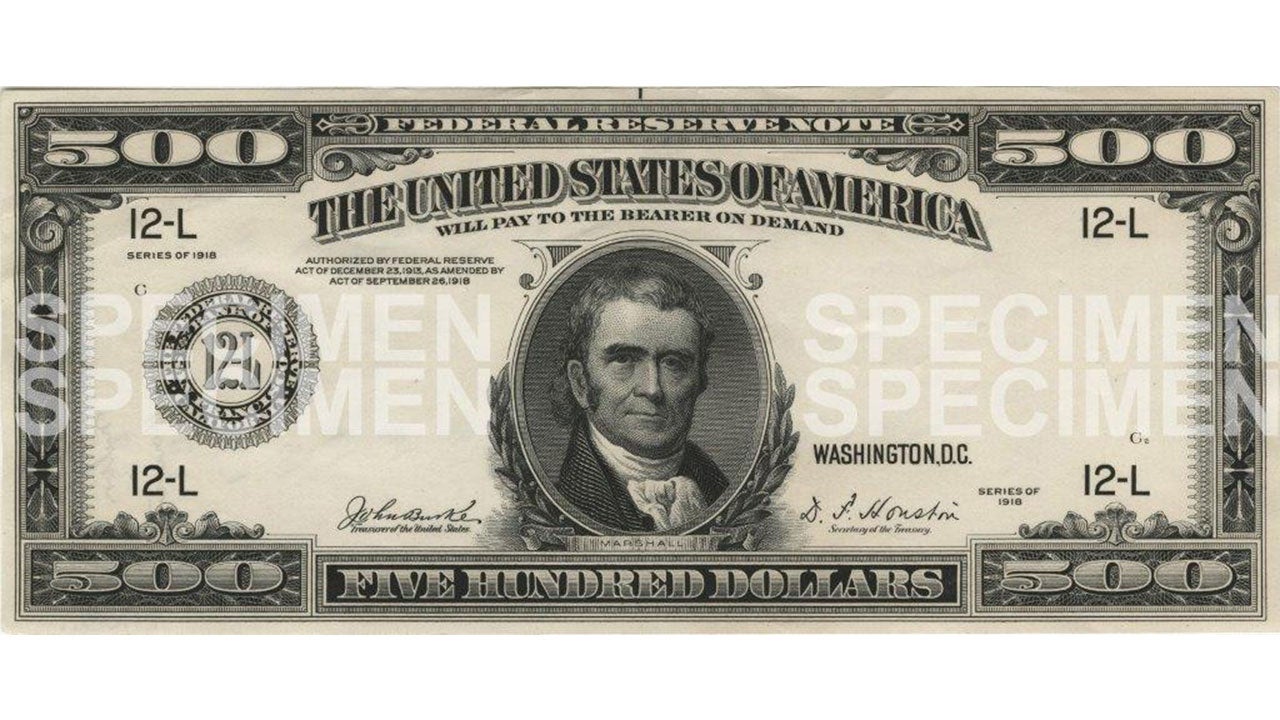United States: The Incredible History of the $ 10,000 and $ 100,000
United States: The Incredible History of the $ 10,000 and $ 100,000
The largest denominations of the U.S. currency were $ 500, 1,000, 5,000, 10,000, and 100,000, although today the highest is $ 100. But the 10,000 is in circulation.

At Bankrate we strive to help you make smarter financial decisions. While we adhere to strict , this post may contain references to products from our partners. Here’s an explanation for
Pictures of big bills
Most of us hope for big balances in our checking and savings accounts, but when you withdraw funds, the biggest bill you’ll see is probably $100.
Once upon a time, though, $500, $1,000, $5,000, $10,000 and $100,000 bills were in circulation. After the last printing of those denominations in 1945, the Treasury Department and the Fed discontinued them in 1969.
The use of large bills has decreased dramatically and they’ve been greater targets for counterfeits versus smaller denominations. They’re still legitimate legal tender but are limited circulation, except for the $100,000 bill, which was only ever used in fiscal channels.
These days, most of these increasingly rare bills are owned by collectors. In fact, if you happen to have a mint condition bill in a rare denomination, it could mean a big payoff. For instance, Antique Money, an organization with 20 locations around the United States that buys, sells and auctions paper currency, once paid more than $20,000 for a rare 1928 star note $1,000 bill.
Here are some rare bills you might want to keep an eye out for.
 Courtesy of US Treasury Department
Courtesy of US Treasury Department$500 Series 1918 Blue Seal
Produced in 1918, the front of this $500 bill bears the likeness of John Marshall, who served as the United States’ fourth Chief Justice of the Supreme Court from 1801 to 1835. The reverse side of the bill depicts Spanish conquistador Hernando De Soto discovering the Mississippi in 1541.
 Courtesy of the US Treasury
Courtesy of the US Treasury$500 Series 1928 & 1934 Green Seal
These green seal notes ($500 bills with the green seal are often called Federal Reserve notes) bear the portrait of William McKinley, the 25th President of the United States. He served a full term and then only six months of his second term, before being assassinated.
 Courtesy of US Treasury
Courtesy of US Treasury$1,000 Series 1918 Blue Seal
This bill, printed in 1918, has Founding Father Alexander Hamilton’s face on the front and a soaring eagle on the back. It’s fitting that Hamilton found his way onto some U.S. currency, since, among his other accomplishments, he’s credited with founding the country’s financial system.
 Courtesy of US Treasury
Courtesy of US Treasury$1,000 Series 1928 Green Seal
Printed in 1928, this $1,000 bill features two-time United States President Grover Cleveland. He was the nation’s 22nd and 24th president, earning him the distinction of being the only president to serve two non-consecutive terms.
 Courtesy of US Treasury
Courtesy of US Treasury$5,000 Series 1918 Green Seal
This 1918-printed $5,000 bill bears the likeness of Founding Father James Madison (often christened the “Father of the Constitution”), who went on to serve as the fourth President of the United States. The back of the bill shows then-General George Washington resigning his commission as commander-in-chief of the Continental Army on December 23, 1783.
 Courtesy of US Treasury
Courtesy of US Treasury$10,000 Series 1918 Green Seal
Just as this $10,000 bill, produced in 1918, is rare, the likeness on the front might be unfamiliar. It shows Salmon P. Chase, who served as President Lincoln’s Secretary of the Treasury from 1861 to 1864. The back of the bill shows the embarkation of the Pilgrims, as they sailed for freedom in North America.
 Courtesy of US Treasury
Courtesy of US Treasury$10,000 Series 1928, 1934, 1934A & 1934B Green Seal
Like the previous $10,000 bill, these bills produced in 1928 and 1934 also bear the likeness of Salmon P. Chase on the front. However, the back of the bill simply says, “The United States of America – Ten Thousand Dollars – 10,000.”
 Courtesy of US Treasury
Courtesy of US Treasury$100,000 Series 1934 Gold Certificate
Though it might be nice to have a bill of this high denomination, the Bureau of Engraving & Printing, a division of the U.S. Department of the Treasury, states, “The $100,000 Gold Certificate was used only for official transactions between Federal Reserve Banks and was not circulated among the general public. This note cannot be legally held by currency note collectors.” The front has a portrait of Woodrow Wilson, the 28th President of the United States.







Leave a Reply
Want to join the discussion?Feel free to contribute!